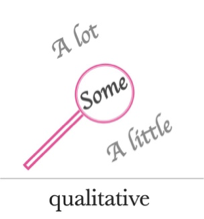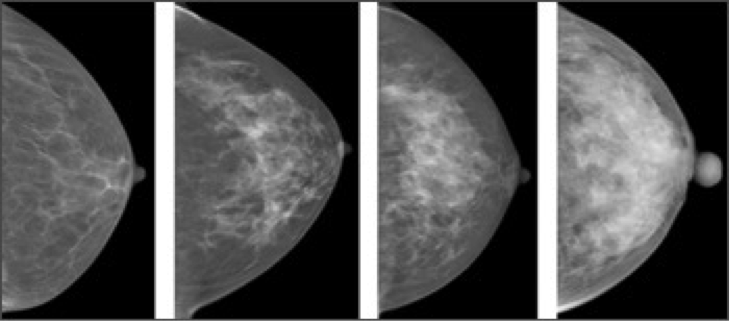You received a letter that says something about dense breast tissue. OK. Now what? What does the language really mean? And what should you be doing about it?
Nearly half of all women have dense breast tissue, so it's common. Breast density officially refers to the amount of fibroglandular tissue in your breast, relative to the amount of fat. I know it's tempting to look down and maybe give your boobs a little squeeze at this point. But, it's not like squeezing the fat on your love handles! You cannot "feel" the difference between the fatty and the dense tissue with your hands. Yep, droopy-post-pregnancy-boobs can still be dense! But let's talk about what density means, and why it's important to know your breast density.
Bottom line, having dense breast tissue can increase your risk of developing breast cancer. But, don't panic. If you have dense breast tissue, your doctor may do an additional screening with another method, like ultrasound. Your doctor also may ask you about your other risk factors to get a bigger picture of your risk. There are no specific recommendations for doctors to follow based on breast density, so the best thing that you can do is know what your breast density is, and then ask your doctor what the plan is to make sure that you are receiving the best screening possible for your breast tissue type and your breast cancer risk.
There are two mains ways to report breast density. Most commonly, your letter/report will have BI-RADS categories on it*. The BI-RADS categories are more qualitative than quantitative. When you are reading your mammogram summary or breast density notification letter, look for some of the keywords in the bullet list below. Your letter might not specifically list the BI-RADS letters A, B, C or D. Instead, your letter might have a sentence like, “your mammogram shows that your breast tissue is dense. Dense breast tissue is common and is not abnormal.” Based on a sentence like this, you would have BI-RADS C or D density. You can also call your doctor or imaging center for confirmation!


*Percent volumetric breast density = the calculation of the volume of fibroglandular (aka dense) tissue divided by the total volume of tissue within the breast.
BI-RADS = the description of the amount of fibroglandular (aka dense) tissue seen on a mammogram
- BI-RADS A: the breasts are almost entirely fatty. about 1 in 10 women are in this group.
- BI-RADS B: there are scattered areas of fibroglandular density, but most of the breast is fat tissue. About 4 in 10 women are in this group.
- BI-RADS C: the breasts are heterogeneously dense, there are small areas of fat, by most of the tissue is dense. About 4 in 10 women are in this group.
- BI-RADS D: the breasts are extremely dense, which lowers the sensitivity of mammography. About 1 in 10 women are in this group.
 These four images represent different levels of breast density based on BI-RADS A, B, C and D (from left to right). You can see the fibroglandular (aka dense) tissue in white and the fatty tissue in gray.
These four images represent different levels of breast density based on BI-RADS A, B, C and D (from left to right). You can see the fibroglandular (aka dense) tissue in white and the fatty tissue in gray.
Women with BI-RADS C and D are at higher risk of developing breast cancer in part because it can be harder to "see" a potential tumor because it blends in with the dense tissue. As you can see in the picture, the dense tissue is white. A breast tumor will also show up as white within the image, so it can be more difficult for a radiologist to distinguish between the tumor and the fibroglandular tissue in a woman with dense breasts.
Density can actually change as you age, and as the hormone levels change in your body. It can even change based on medication you may be on. So, your breast density last year may not be the same next year. Stay current with your mammograms. Make sure you ask your clinician about your breast density status. It shouldn't be a secret!
*If you live in a state without a breast density notification law in place, you may not receive the information on your report. A federal mandate was signed in 2019 stating that all mammogram reports must include breast density information, but this law will not go into effect until 2022. If you don’t know your breast density, ask your doctor or imaging center. To learn more about the efforts that have gone into breast density notification laws, please see: https://densebreast-info.org


